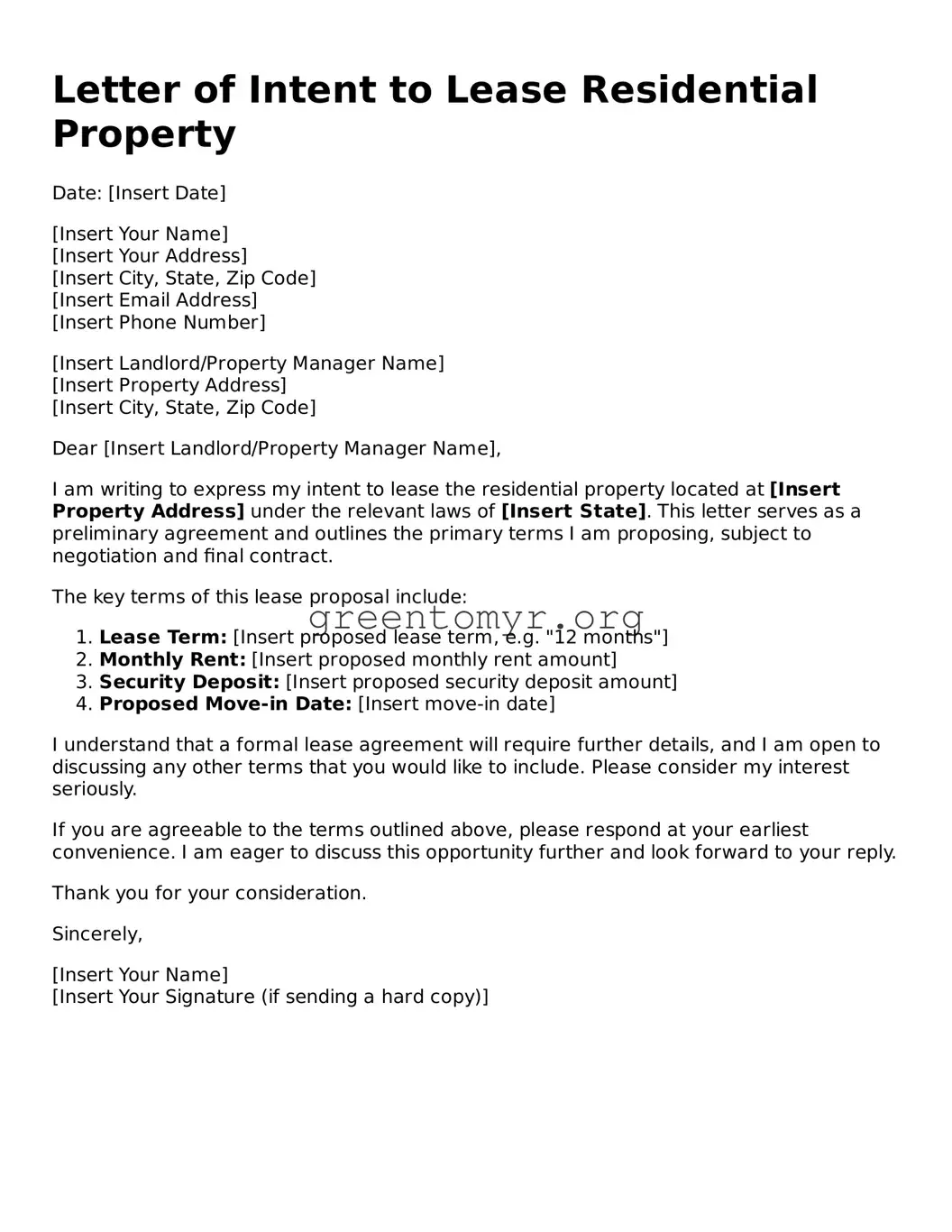Letter of Intent to Lease Residential Property
Date: [Insert Date]
[Insert Your Name]
[Insert Your Address]
[Insert City, State, Zip Code]
[Insert Email Address]
[Insert Phone Number]
[Insert Landlord/Property Manager Name]
[Insert Property Address]
[Insert City, State, Zip Code]
Dear [Insert Landlord/Property Manager Name],
I am writing to express my intent to lease the residential property located at [Insert Property Address] under the relevant laws of [Insert State]. This letter serves as a preliminary agreement and outlines the primary terms I am proposing, subject to negotiation and final contract.
The key terms of this lease proposal include:
- Lease Term: [Insert proposed lease term, e.g. "12 months"]
- Monthly Rent: [Insert proposed monthly rent amount]
- Security Deposit: [Insert proposed security deposit amount]
- Proposed Move-in Date: [Insert move-in date]
I understand that a formal lease agreement will require further details, and I am open to discussing any other terms that you would like to include. Please consider my interest seriously.
If you are agreeable to the terms outlined above, please respond at your earliest convenience. I am eager to discuss this opportunity further and look forward to your reply.
Thank you for your consideration.
Sincerely,
[Insert Your Name]
[Insert Your Signature (if sending a hard copy)]
